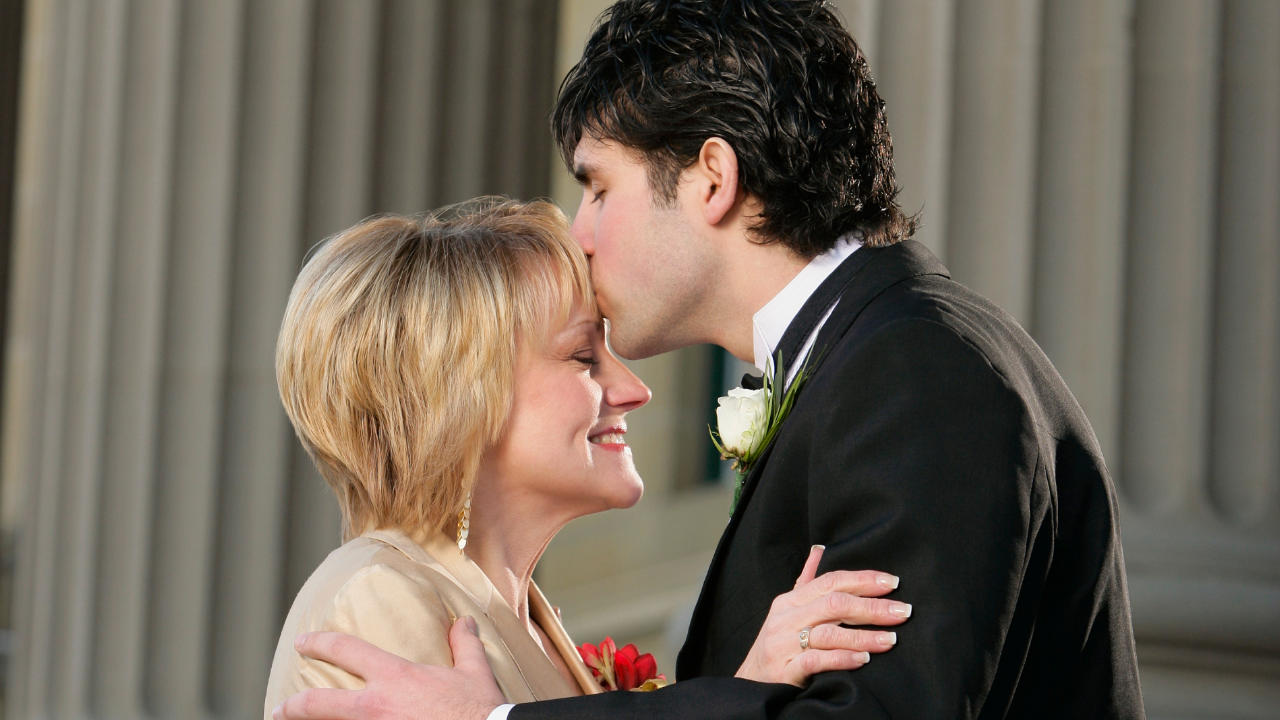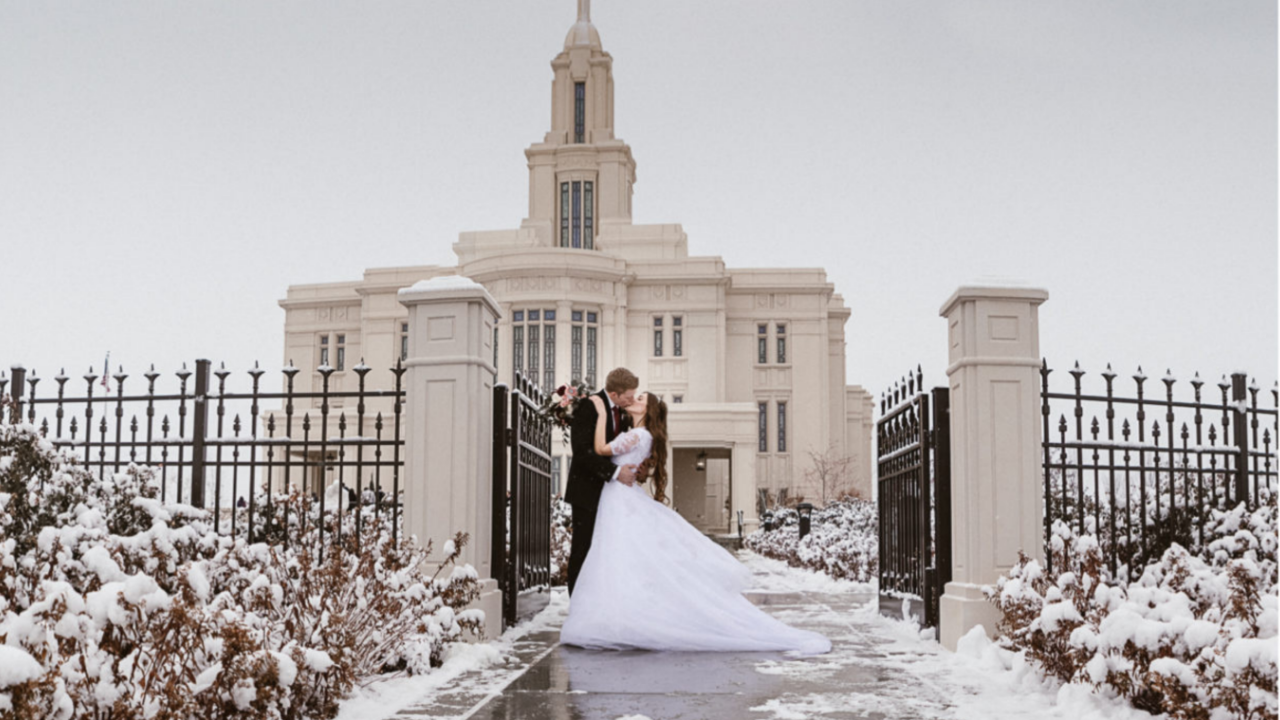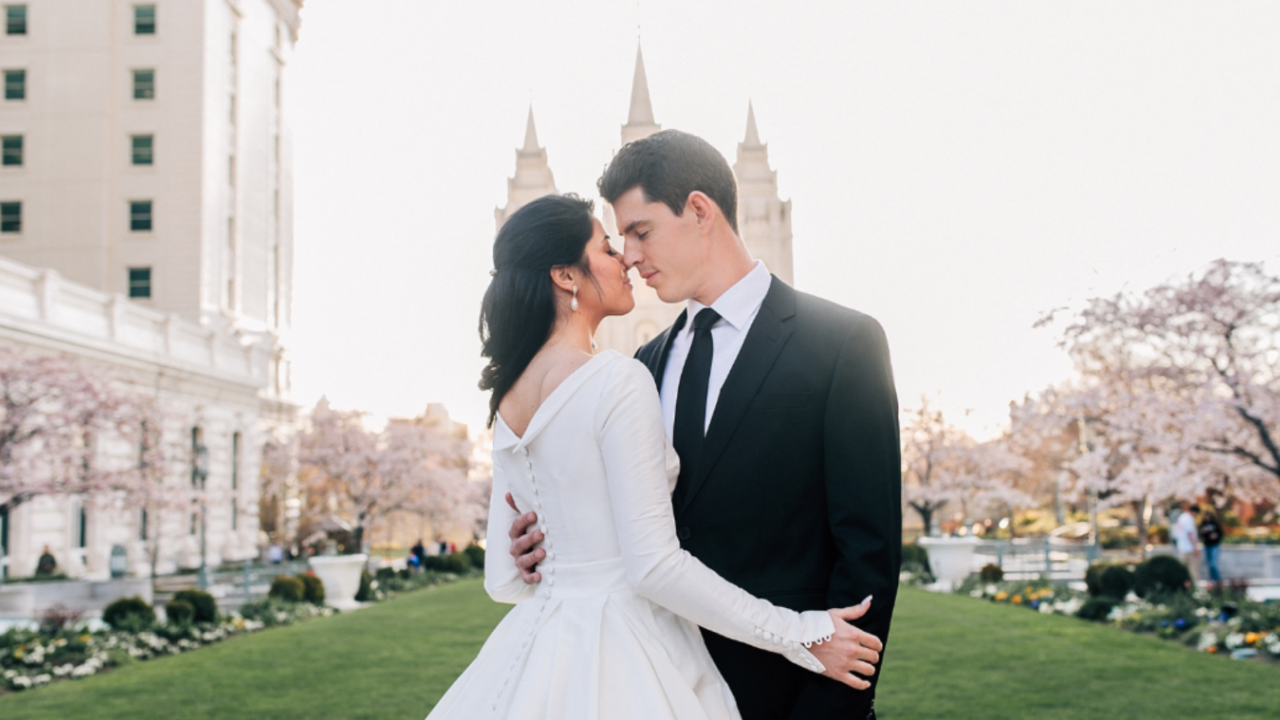Wedding Food: Catering or DIY for Your LDS Reception?

Image Courtesy of Kylee Ann Photography
Food is one of the most memorable (and potentially stressful!) parts of your wedding day. Whether you’re planning an elegant plated dinner or a simple hors d’oeuvre reception, your catering choices will shape your guests’ experience—and your peace of mind.
So should you hire a professional caterer? Or roll up your sleeves and go the DIY route?
Let’s explore the options and help you find what’s best for your budget, your schedule, and your sanity!
First Things First: Start Early
Planning early gives you more time to compare venues, gather pricing, and get the food just right—without that last-minute pressure. If you’re considering a popular location, especially a church cultural hall or reception venue in high demand, early planning is essential to secure your preferred time and date.
Catered vs. Do-It-Yourself
If your budget allows, hiring a professional caterer is by far the easiest and most enjoyable option. You’ll actually get to eat the food instead of serve it—and you won’t be stuck in the kitchen when you’d rather be celebrating.
Can’t hire a caterer? Consider at least bringing on a day-of kitchen coordinator. This one person can make all the difference by overseeing setup, buffet lines, and clean-up—so you and your family can enjoy the day.
If you’re tackling the food yourself, take heart! With good organization and a strong support team, your DIY reception can be both beautiful and budget-friendly.
Budget Wisely
Even DIY buffets can run up to $10 per guest once you factor in food, rentals, serving ware, and supplies. That’s why it’s important to prioritize. Think about what you want to remember most about the day—and what you’re willing to let go.
Don’t forget to consider liability insurance for your event, especially if you’re preparing and serving food yourself. It’s affordable, and many venues require it.
Timing Is Everything
Here’s a little secret: if you schedule your reception between meal times, your guests will naturally eat less—and your costs can drop significantly. Afternoon and late-evening receptions tend to be lighter, easier, and more affordable.
Just be sure to let your guests know what to expect:
“Please join us for a dessert reception” or
“Hors d’oeuvres will be served after the ceremony.”
Decide How You’ll Serve
Buffet-style is the most common choice for LDS receptions—it’s affordable, flexible, and easy to manage with volunteers. Plan one serving line per 50–70 guests, and put less expensive items (like salad and bread) near the beginning of the table so guests fill up on those first.
Other serving options:
-
Cafeteria-style: Good for portion control, but requires more staff
-
Family-style: Charming, but tough to coordinate and keep food warm
-
Full service: Formal and lovely—but also the most expensive
Set up separate stations for desserts, drinks, and bussing to reduce traffic jams and create natural gathering spots.
Assign Responsibilities Early
The bride (and her mother!) should not be in the kitchen on the big day. Make assignments ahead of time. You’ll need help for:
-
Equipment pickup and return
-
Food prep and transport
-
Buffet setup and serving
-
Table and chair setup
-
Cake delivery
-
Clean-up (you’ll want 6–7 helpers!)
Designate one trusted “point person” to oversee the whole operation. Make sure they have a clear task list and timeline.
Renting Equipment or Using the Church Kitchen
If you’re using your local LDS chapel, inspect the kitchen early to see what’s available—and what’s not. Most church kitchens are only approved for warming and serving, not full cooking, so you may need to prep food off-site.
You can rent almost anything: tables, chafing dishes, punch bowls, trays, linens, and more. Or borrow what you can, but be sure to track every item and discuss how you’ll handle any losses or damage.
Plan a Smart Menu
 Keep it simple! Choose recipes you or your helpers have made before—or test them in advance. Use make-ahead dishes or prep in stages to lighten the day-of load.
Keep it simple! Choose recipes you or your helpers have made before—or test them in advance. Use make-ahead dishes or prep in stages to lighten the day-of load.
Offer at least one vegetarian or allergy-friendly dish, label anything with nuts or other common allergens, and stick with foods that are easy to eat and clean up.
Pro tip: Serve light-colored drinks to avoid stains, and offer pre-cut meats to make things easier on guests. Small thoughtful touches like this go a long way!
How Much Food Will You Need?
It depends on time of day, age of guests, and how much variety you offer. The general rule: guests eat more during traditional meal times and less in hot weather. Expect your younger guests (especially teens and twenties) to eat the most.
Plan on 3 beverages per person, and consider offering extras like dessert take-home bags or leftover containers.
If you'd like detailed portion guidelines and a sample catering chart, be sure to scroll down and sign up for the free program. I have a full wedding catering calculator inside.
Want Help With Every Detail?
We’ve compiled everything you need to know in one easy-to-follow guide. From planning your menu to calculating servings, setting up your buffet, and delegating tasks—it’s all in here:
Explore the LDS Wedding Catering Guide
Wedding Catering
Unlock Your
Dream
Church of Jesus Christ Wedding:
Divine, Affordable, and Unforgettable
Ready to plan a wedding that reflects your faith, your style, and your values?
I created the Church of Jesus Christ Wedding Planner to support LDS brides who, like you, want a wedding day that’s both beautiful and sacred. Whether you’re looking for meaningful decor ideas or practical planning help, I’m here to guide you every step of the way—with resources designed just for Latter-day Saint brides. You don’t have to figure this out alone. Let’s make your wedding day as joyful and unforgettable as the covenant you’re preparing to make.
Your faith. Your love. Your day. Let's make it beautifully yours.
Disclaimers: While I am honored to be a member of The Church of Jesus Christ of Latter-Day Saints, please note that this site is not an official site of The Church of Jesus Christ of Latter-Day Saints. And while I strive to live by the doctrine of the church, the views, content, and resources provided here are solely my own and do not represent official doctrine or policy of The Church of Jesus Christ of Latter-Day Saints.












